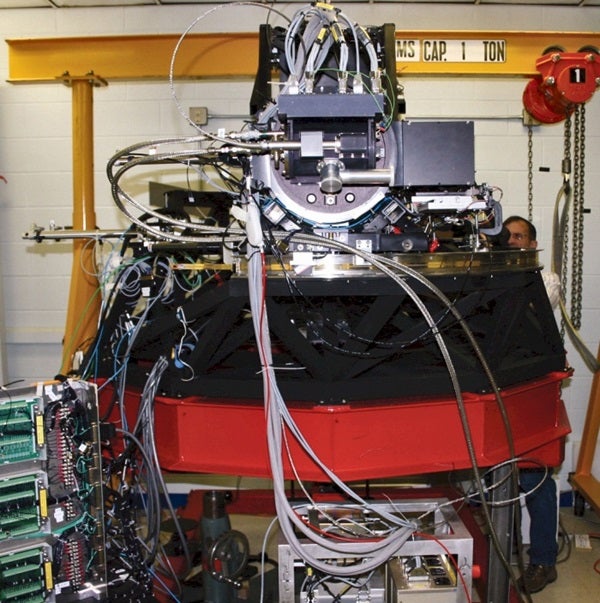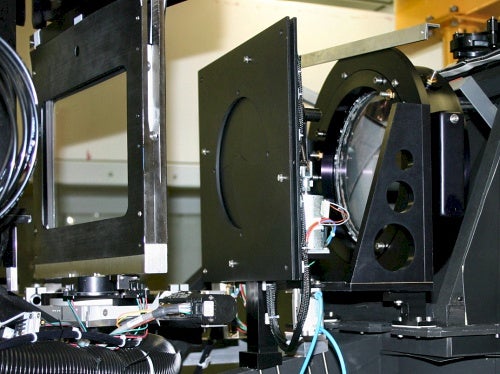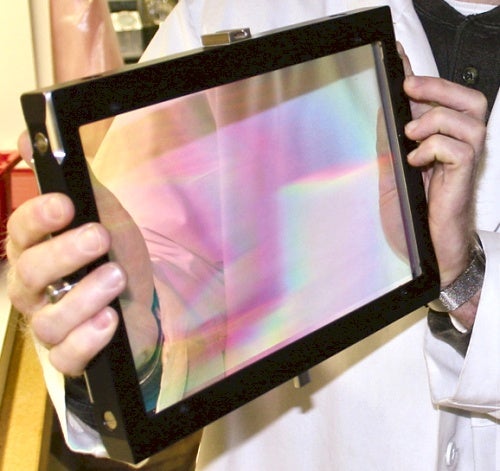Astronomers and engineers at the University of Wisconsin, Madison have nearly completed a groundbreaking tool that will help them decipher clues found in distant starlight. The instrument, the Prime Focus Imaging Spectrograph (PFIS), will be attached to the new Southern African Large Telescope (SALT). SALT is located 220 miles (350 kilometers) from Cape Town on a mountain plateau near the edge of the Kalahari Desert. First light — the first test of the complete system using celestial objects — is scheduled for April.
The reason the PFIS’s weight had to be carefully monitored is its future location. Most spectrographs are huge machines located in separate rooms near their telescopes. The light from these telescopes is carefully routed to the spectrographs, which then break the light into its component colors for study.
The PFIS, on the other hand, will sit at SALT’s prime focus, 10 stories above the primary-mirror array. “Because it is at the prime focus, it has to be a light, small, and remotely operated,” says Kenneth H. Nordsieck, a University of Wisconsin-Madison astronomer now overseeing construction of the $5 million device. “It weighs half a ton as opposed to 10 tons.”
“Another unusual capability of our instrument is that it can take spectra at a rate of 20 times a second,” Nordsieck said. Because of this capability, PFIS will be capable of taking spectral movies of eclipses, pulsing stars, and comets.
The PFIS also is highly versatile. It uses a combination of lenses, filters, and diffraction gratings, which break up the light. The filters and gratings can be individually selected to correspond with the type of object being imaged or the desired wavelength being studied. In addition to high-quality glass lenses, lenses of calcium chloride and sodium chloride also will be used because they are more transparent to ultraviolet light than glass. A lens made of sodium chloride — also known as salt — seems only fitting for this project.












